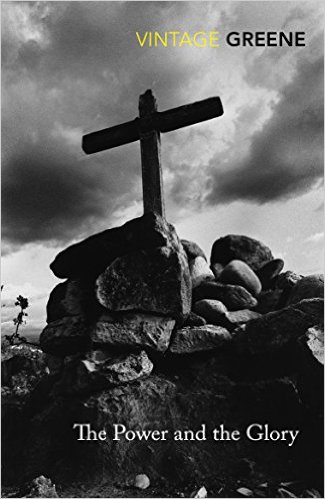 I was first introduced to Graham Greene in a 20th century fiction class at university. At the time, I was a Lutheran who knew little about the Catholic Church and even less about the Mexican persecutions of Catholics. I enjoyed The Power and the Glory, but I didn’t understand the depth of the novel
I was first introduced to Graham Greene in a 20th century fiction class at university. At the time, I was a Lutheran who knew little about the Catholic Church and even less about the Mexican persecutions of Catholics. I enjoyed The Power and the Glory, but I didn’t understand the depth of the novel then.
Recently, I reread The Power and the Glory. I should say first that books are always better on the second read, though I rarely have time to read a book twice these days.
I read the novel this time as a Catholic, with a better understanding of a priest’s role and the importance of the Eucharist. I also knew more about that period in history, thanks to Holy Heroes Glory Stories about Mexican saints like Blessed Miguel Pro and Blessed Jose Sanchez del Rio. And I have to agree with John Updike that this is Graham Greene’s masterpiece.
The Plot in The Power and the Glory
The Power and the Glory is the story of a “whiskey priest”—the last priest left alive in an unnamed state in Mexico. At the story opens, he is attempting to get out when he is called to help someone. He answers the call, as he always does, and misses the boat. From there, he travels through the state, trying to stay one step ahead of the police while hearing confessions and offering Mass.
The priest has two close encounters with the police, including one in his home parish. There, his daughter—the product of a one-night stand—inadvertently saves his life. The priest is well aware of his failures as a priest, yet also aware he is the only one who can bring God to his people. The pain of death keeps him running just as much as the knowledge of how much his people need the Sacraments.
My Thoughts on The Power and the Glory
If I were still an English student, I would write a paper about Greene’s use of names in The Power and the Glory. Names are often significant in books, but especially so here. The priest, the half-caste who betrays him, and the lieutenant who captures him are not given names, only titles. The woman with whom the priest has an affair is named Maria. The two non-Catholics who help the priest, even though they don’t share his beliefs, also have specific names. The mother who reads her three children the story of a Mexican martyr has no name. Her son—bored with the story until he encounters the whiskey priest—is Luis.
The Catholic Church has, in modern times, come under fire for the conduct of some of her priests. One bad person is all it takes for us to label an entire group of people as bad. The Power and the Glory shows that, no matter what the priest is, he is still God’s hands to His people. The Eucharist consecrated by the prayers of an alcoholic priest with an illegitimate daughter is no less God’s Body than the Eucharist consecrated by a pure, faithful priest. It is God who works the miracle, not the man.
The Power and the Glory is a powerful, page-turning story about faith, sacrifice, and love. It gives modern readers a glimpse into that period of Mexican history. It also provides much food for thought about the teachings of the Catholic Church.
The Author of The Power and the Glory
Graham Greene was born in England in 1904. He graduated from Balliol College, Oxford, and worked as a journalist and editor for various newspapers. He joined the Catholic Church in 1926 and four of his novels have strong Catholic themes, although he disliked being called a Catholic author. His review of a Shirley Temple movie caused Twentieth Century Fox to sue him, so he traveled to Mexico. His observations there in 1938 led to writing The Power and the Glory. He suffered from depression and died in 1991 from leukemia.
I bought this book for my English class over a decade ago. I kept it because I knew I’d reread it, and it still belongs on my bookshelf among my favourite classic novels.

No Responses Yet